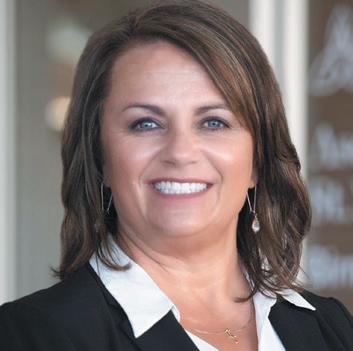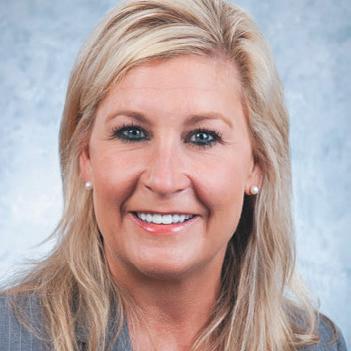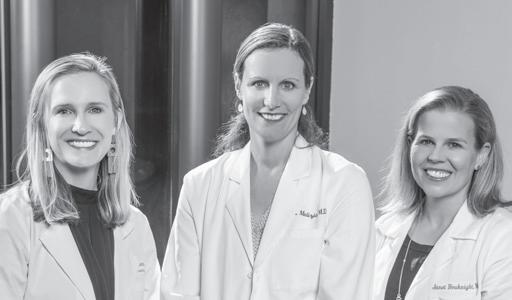
6 minute read
Heightened Training and Attention
By Marti WeBB Slay
As workplace violence becomes a growing issue in healthcare, many hospitals are beginning to develop programs to keep employees safe.
“We’ve had workplace violence as long as I’ve been in healthcare, but it has increased,” said Kelli Powers, president of Decatur Morgan Hospital. “I’m a flagbearer for it in a way, to protect my employees. We all have a shortage of employees everywhere, and I want to make sure we have as little violence as possible. Of course, I’d like to have none, so I’m a constant advocate for how we can minimize workplace violence.”

According to the American Nurses Association, one in four nurses is assaulted, but only an estimated 20 to 60 percent of incidents are reported. The organization has launched A Nurse’s Call to Action, encouraging nurses to pledge to share the program, support zero tolerance policies and report abuse. Nurses can take the pledge at Nursingworld.org/Pledge.
It’s not always easy for healthcare workers to take such a pledge and follow through. “Healthcare workers are there to care for people, so it’s not in their nature to move forward with actions like this, but it’s important,” said Amy Shelton, MSN, RN, chief nursing officer of St. Vincent’s Ascension. “It’s a felony in the state of Alabama to assault a healthcare worker. As leaders of healthcare organizations, we have to support our associates and have an environment that’s safe for them and for our patients, so our providers are able to deliver care.

“We support our associates with a no tolerance policy. We will stand behind them in the event an incident may occur. We’ve seen a rise in healthcare violence towards workers, and it’s important that our associates know they have our support. We have a prevention plan in place, but if some unfortunate event should occur, they are totally, 100 percent supported by us.” lnspirien, manager of the Healthcare Workers’ Compensation Fund (HWCF) as well as Inspirien Insurance Company, a medical malpractice carrier in the state, has developed classes for its insureds and members focusing on this issue. “We are doing our own initiatives to bring awareness to workplace violence. We see it every day when the claims come in, so we are gathering that data and seeking opportunities to support our healthcare partners,” said Cindy Sawyer, Marketing Manager. lnspirien is highlighting Violence Against Healthcare Workers by making it one of the featured topics in their annual Risk Seminar this year. Participation is open to all healthcare workers in Alabama. Find out more information on their website, inspirien.net.
Decatur Morgan’s Powers said it’s important to acknowledge that workplace violence is an increasing problem in many industries beyond healthcare. “I don’t want healthcare to get the total blame,” she said. “We see this everywhere. You want to be honest with people, but you don’t want them to be afraid to work at a healthcare provider.


“A key first step is to talk about it and heighten awareness. If we can minimize a situation ahead of time, it doesn’t lead to violence. All our employees are taking a computer-based learning module, based on MOAB (Management of Aggressive Behavior). Some of that is online, and there are four-hour and eight-hour classes.”
Since the emergency department is often a target for violence, the Decatur Morgan ED staff is taking the eight-hour MOAB class module in person. “You can’t do it all on the computer,” Powers said. “A lot of it is body language.
“It’s also important to be aware that violence doesn’t always come from the patient. It can be family too. Some of it comes with family members to each other. You can get a family here that doesn’t always get along, and they are stressed out with a short time to make decisions that aren’t always easy to make. Disagreements can escalate quickly in that situation. Also, violence doesn’t have to be physical. It can be mental and verbal as well.”
In addition to the training, Decatur Morgan has added more security staff, and they now have a safety officer, a nurse by training whose responsibility is to stay focused on security. They are also meeting with local law enforcement, their district attorney, and mental health offi- cers to work on solutions.
Powers emphasized the importance of recognizing a potentially violent situation and taking steps early to de-escalate. She cites a recent case, when a homeless patient, irritated with the emergency department staff, came to the administration offices. Concerned that the patient was likely high on illegal drugs, the staff offered him a meal, which calmed him down and kept him from escalating to violence. “We try to be as accommodating as possible, but we aren’t going to tolerate aggressive behavior,” Powers said.
She believes it is reassuring to the employees to know violence is being addressed. “People are glad to talk about it, and they are glad to see that as president, it’s on my radar to do something about it,” she said. “We are addressing it and have options for them. And again, if you can get ahead of it, you can minimize so much of it. Be proactive instead of reactive.”
Powers encouraged other hospital administrators around the state to work together and share ideas. “Don’t ignore that it’s an issue,” she said. “Let’s work together to come up with solutions to help each other. I think your employees deserve that, to know we are all working together to make a safer environment for everybody.”
Rich and the Veritas team were professional, hardworking and discrete during our search for and acquisition of a new location for our practice. They guided us at each step and were able to accommodate meetings after clinic. We give them our highest recommendation.

954-2514 abeesley@alamedical.org
How to Diagnose Polycystic Ovary Syndrome,
pits, groin, or under the breasts, as well.
A diagnosis of PCOS requires the presence of at least two of these three conditions: irregular periods, high levels of androgen, and polycystic ovaries. An irregular period would be more than 60 days apart, often as rarely as three times a year. The excess hormone levels may show as acne or excess hair growth such as on the face, and can be determined with a blood test for testosterone.
The third criteria of ovaries appearing polycystic requires only an ultrasound to confirm. “We actually don’t need imaging to confirm two of these conditions” Woodson says, stressing how simple the diagnosis can be. “But even if I see those first two, I usually corroborate it with a pelvic ultrasound. I also recommend that the blood test cover all hormones, which can be tricky to assess so this sometimes requires an OB/GYN or an endocrinologist. And providers should test the A1C, which can diagnose metabolic syndrome. Most of women who have metabolic syndrome will also have PCOS, but those with PCOS do not always have metabolic syndrome.
“The sneakiest people to diagnose are the thin women who come in with infertility, and it turns out they have polycystic ovaries, so are not ovulating. They’re tricky because most medical training pushes doctors to assume obesity is a prime condition of polycystic ovary syndrome. Even normal BMI woman can have PCOS. It comes down to menstrual history and physical features, such as the skin changes or excess hair.”
Undiagnosed, the syndrome can lead to endometrial cancer. “When you’re not having a period, you have low progesterone which makes higher estrogen that can place the uterus endometrium at risk for cancer, especially if you have a BMI of 40 to 60,” Woodson says. “The obesity component can put even younger women at risk for the cancer.
“We want to get women diagnosed for PCOS to be preventive. We can pro- continued from page 1 tect her uterus and endometrium by giving progesterone, if her natural levels are low.” Generally, that requires only a prescription for tablets, an IUV, or birth control.

When PCOS is diagnosed, the treatment tends to be individualized depending on the patient’s stage of life and fertility desires. She may have infrequent ovulation, but no problems with extra hormones. Or she may or may not have metabolic syndrome.
“There are so many nuances, and because we’re getting a wider variety of treatment options we really can individualize our approach,” Woodson says. “If a woman has PCOS as well as metabolic syndrome, we get them on metformin.” Metformin, a biguanide, decreases glucose absorbed from food and produced by the liver, which helps prevent the progression into diabetes among this younger demographic.
For overweight patients, weight loss by itself can greatly improve or sometimes completely resolve their PCOS problem, making weight loss a viable treatment. “As little as a five percent body weight loss can help get a PCOS patient to ovulate spontaneously on her own with more regularity and fertility,” Woodson says.
Woodson has been seeing more women coming in with infertility or irregular menstruation issues. “It feels like a movement among women wanting to be in tune with their bodies,” she says. “They no longer want to be on anything hormonal, so they stop their birth control and start tracking their cycle closely with apps. They’re finding it empowering to know about their reproductive health, which is exposing more PCOS cases and this is why primary care providers and specialists should keep PCOS on their diagnostic radar.”











